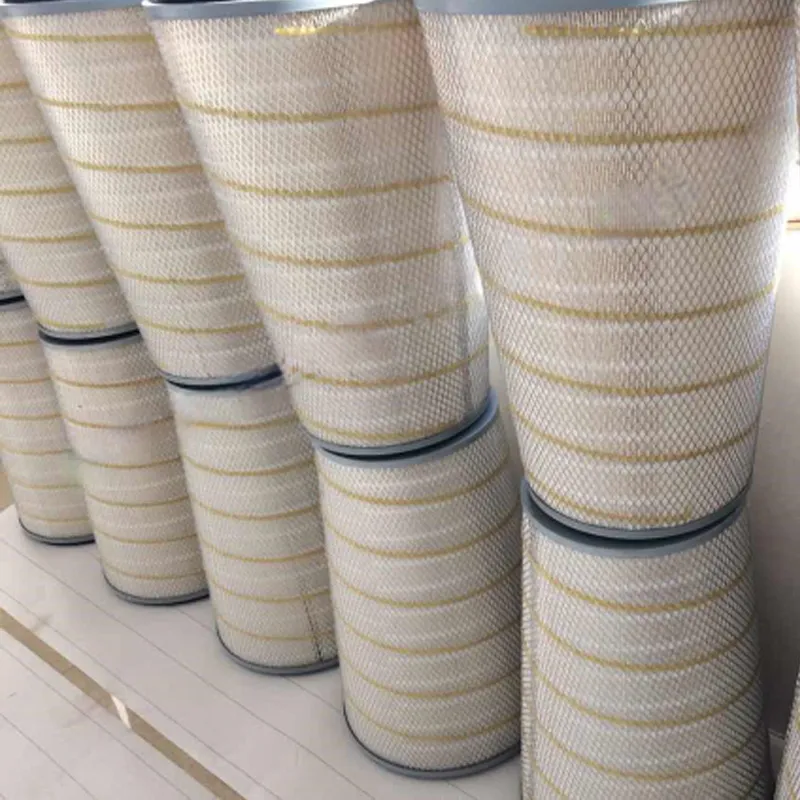 Tel:
+8615930870079
Tel:
+8615930870079
dec. . 03, 2024 21:29 Back to list
sintered metal filter cartridge
The Importance of Sintered Metal Filter Cartridges in Industrial Applications
Sintered metal filter cartridges have gained significant attention in various industries due to their remarkable durability, efficiency, and versatility. These cartridges are manufactured through a process known as sintering, which involves compacting metal powders under high temperature and pressure to form a solid structure. This unique production method results in filters that possess distinct advantages over traditional filter materials, making them indispensable in numerous applications.
What Are Sintered Metal Filter Cartridges?
Sintered metal filter cartridges are porous structures made from stainless steel or other metal alloys. They are designed to provide high filtration efficiency and are capable of filtering out particulate matter from liquids and gases at various micron levels. The pores within the filter material are uniform in size, allowing for consistent and reliable filtration performance while maintaining high flow rates.
Benefits of Sintered Metal Filters
1. Durability and Longevity One of the standout features of sintered metal filter cartridges is their incredible durability. Unlike paper or textile filters that can degrade or tear over time, sintered metal filters are resistant to mechanical stress, temperature fluctuations, and chemical corrosion. This makes them ideal for harsh operating environments where other filters would fail.
2. High Filtration Efficiency Sintered metal filters can achieve high filtration efficiencies, capable of removing particulates as small as a few microns. This is crucial in industries such as pharmaceuticals, food processing, and petrochemicals, where purity is essential.
3. Easy to Clean and Reuse Many sintered metal filter cartridges can be cleaned and reused, offering cost-saving advantages in the long run. Methods such as backwashing, ultrasonic cleaning, or chemical cleaning can effectively remove accumulated debris from the filter, restoring its filtration capacity and extending its lifespan.
sintered metal filter cartridge

4. Temperature and Chemical Resistance These filters can operate effectively at high temperatures (up to 600 degrees Celsius or more) and are resistant to a wide range of chemicals, making them suitable for diverse applications, including those involving aggressive solvents or acids.
5. Customizability Sintered metal filters can be tailored to meet specific filtration needs. Manufacturers can adjust parameters such as pore size, thickness, and diameter, allowing for customization to fit various processes and systems.
Applications in Various Industries
Sintered metal filter cartridges are employed in several critical industries. In the oil and gas sector, they are used for separating contaminants from fuel and lubricants. In the pharmaceutical industry, they help ensure the purity of products by filtering out hazardous particles from liquids. Moreover, in food and beverage processing, these filters play a vital role in maintaining quality and safety by preventing impurities from entering the final product.
In addition to these applications, sintered metal filters are increasingly being adopted in water treatment processes, air filtration systems, and semiconductor manufacturing, showcasing their versatility across multiple sectors.
Conclusion
The role of sintered metal filter cartridges in modern industrial applications cannot be overstated. Their resilience, efficiency, and adaptability make them a smart choice for businesses aiming to enhance product quality and operational efficiency. As industries continue to seek solutions that meet stringent regulatory standards and increasingly complex challenges, the demand for high-performance filtration solutions like sintered metal filters is likely to grow. Companies that recognize the potential of these innovative filters stand to gain a competitive edge in both efficiency and cost-effectiveness. As technology advances, we can anticipate further developments in sintered metal filtration, paving the way for further enhancements in industrial processes.
-
Types and Applications of Air Filtration CartridgesNewsJul.28,2025
-
The Role of Gas Turbine FiltersNewsJul.28,2025
-
Mastering Air Filter Cartridge UseNewsJul.28,2025
-
Advanced Turbine Filters for Modern Gas TurbinesNewsJul.28,2025
-
Cellulose Air Filter Cartridge Advantages in Dust FiltrationNewsJul.28,2025
-
Cellulose Filters for Air Particle ReductionNewsJul.28,2025

 Email:
Email:





